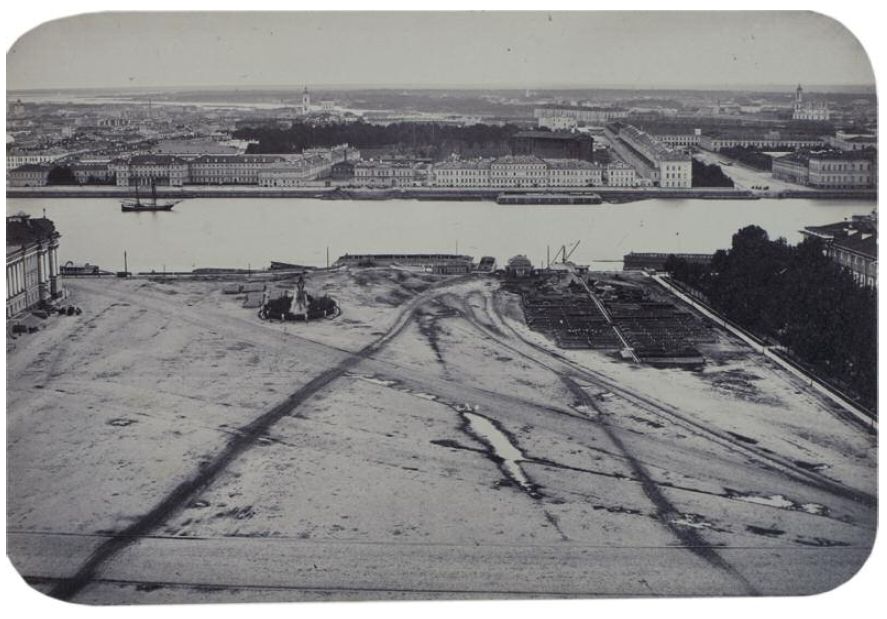Alfred Lorens1870 (ca)
St Petersbourg
Albumen print, from collodion glass
negativeCEROS - Jean-Mathieu Martini / Serge PlantureuxBinoche et Giquello, épreuves choisies, 18 november 2010, lot no: 80
Included in an album of fifty mounted albumen prints from collodion glass negatives presented in an elegant vintage case.
The city of St-Petersbourg, even with its tragic social history has one of the most exciting photographic history. The Commission of Stone Buildings of Moscow and Saint Petersburg established in 1762 ruled that no structure in the city be higher than the Winter Palace and prohibited spacing between buildings. During the reign of Catherine the Great in the 1760s-1780s, the banks of the Neva were lined with granite embankments.
However, it wasn't until 1850 that it was allowed to open the first permanent bridge across the Neva, Blagoveshchensky Bridge. Before that, only pontoon bridges were allowed. Obvodny Canal (dug in 1769-1833) became the southern limit of the city.
By the 1840s the neoclassical architecture had given place to various romanticist styles which were dominant until the 1890s, represented by such architects as Andrei Stackenschneider (Mariinsky Palace, Beloselsky-Belozersky Palace, Nicholas Palace, New Michael Palace) and Konstantin Thon (Moskovsky Rail Terminal). The Church of the Savior on Blood, designed in the Russian revival style, commemorated the place where Alexander II of Russia was assassinated in 1881.
With the emancipation of the serfs undertaken by Alexander II in 1861 and the industrial revolution, the influx of former peasants into the capital increased greatly. Poor boroughs spontaneously emerged on the outskirts of the city. Saint Petersburg surpassed Moscow in population and industrial growth and grew into one of the largest industrial hubs and cities in Europe.
LL/41100

